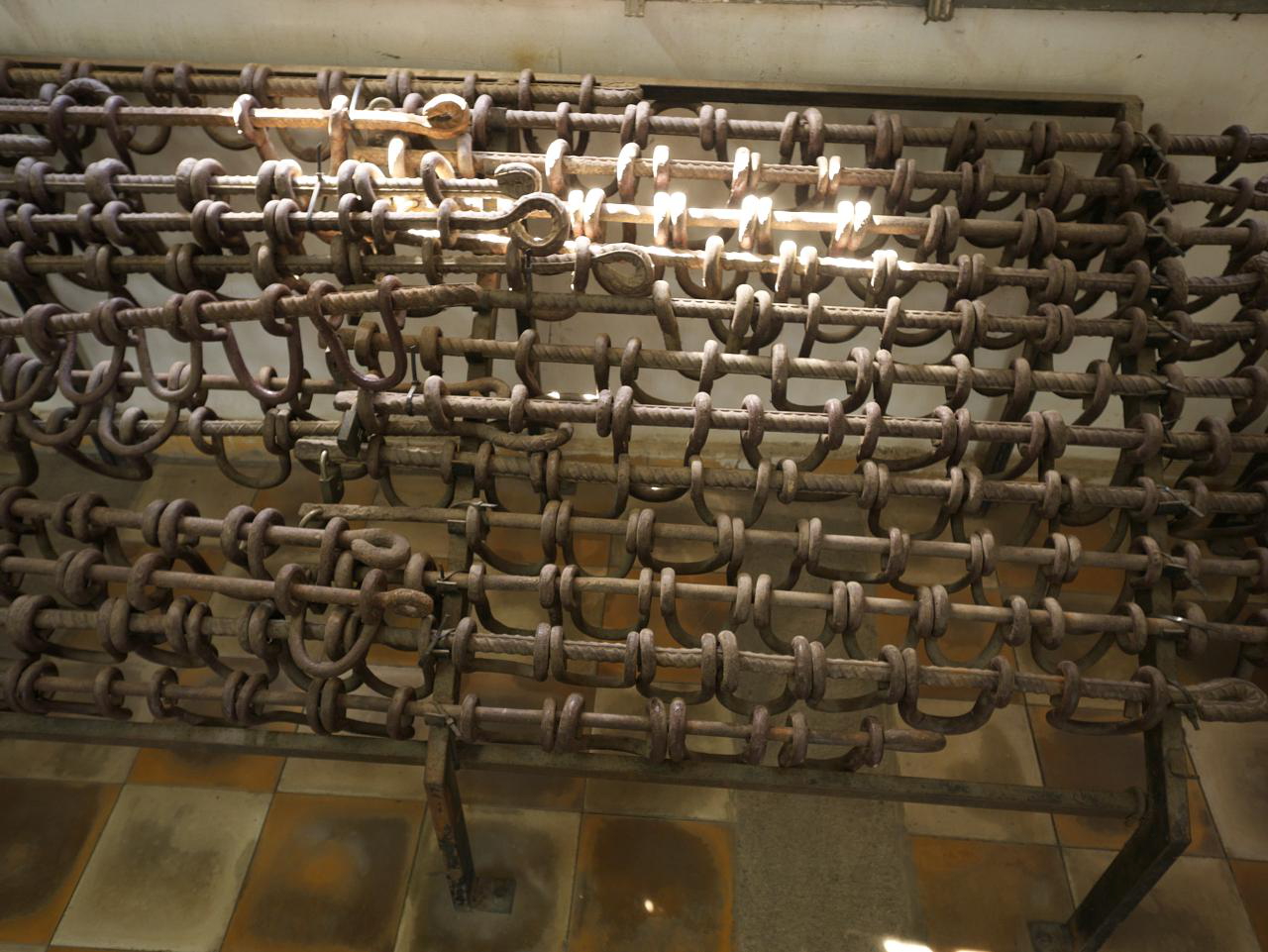
Our second day in Phnom Penh was spent at S21, also known as the Tuol Sleng Genocide Museum, a high school that became one of hundreds of torture and death centres operated by the Khmer Rouge. More than two million Cambodians perished by their hand.
Supported by Mao, the Khmer Rouge seized power in 1975 amid the chaos surrounding the end of the Vietnam War. Pol Pot, their France-educated leader, wanted Cambodia to become a perfect communist society containing only peasants working in rural communes. To accomplish this, the former teacher and his sidekick Nuon Chea — aka ‘Brother No. 2’ — decreed that all educated people or those with memory of the old ways should be killed. This included most Cambodian adults. Cities such as Phnom Penh were forcibly emptied overnight and the people force-marched to the countryside where they began new, short, malnourished lives of slavery and terror.
Many lucky ones were killed quickly — men, women, children, babies, officials, teachers, officers, doctors, civil servants, soldiers, eyeglass wearers etc. Others were imprisoned and tortured in the most horrific manner, presumably so they would provide names and confess their imagined sins before they died. Or maybe there was no reason.


S21 was the Khmer Rouge Phnom Penh torture center run by former math teacher Comrade Duch, who was eventually convicted of war crimes and died in jail in 2020. His brutality cannot be overstated: “on a list containing the names of 17 prisoners (eight teenagers and nine children), he wrote the order “Smash them to pieces. On a list of 20 female detainees, Duch wrote annotations for each of them, ordering: ‘take away for execution,’ ‘keep for interrogation’ or ‘medical experiment.’ At least 100 detainees died after having all of their blood drawn for transfusions for wounded soldiers. (Un-anaesthetized) surgical operations were also performed on detainees in order to train medical staff.”
S21 was set up in a high school with long shaded corridors overlooking a lovely green courtyard. Some classrooms were divided into small brick cells for higher status prisoners and others were used for mass detention of lower status victims who were restrained in homemade re-bar ankle shackles and jammed head to foot with very little food or water. They got a monthly blast with a fire hose to clean things up.










When the Vietnamese Army defeated the Khmer Rouge in 1979 they found six remaining bodies at S21 — former senior comrades who had fallen afoul of their allies — still tied to their beds, mutilated, swollen and in pools of blood. They were buried on site. All other victims had disappeared and were identified by the meticulous records genocidal monsters seem to favour. Piles of bones and skulls were later excavated.



Worth mentioning is the contribution made by a group of Swedish Mao enthusiasts who visited Cambodia several times starting in 1978 to report on the progress of the revolution. Led by Jan Myrdal, they were impressed by the results of the revolution and accepted that death and torture was necessary for the greater good. After returning home they refuted and undermined the atrocity reports of Cambodian refugees. The Swedish communists lobbied for the Khmer Rouge and were taken seriously by western politicians. Their efforts prolonged Cambodia’s suffering and earned them a special place of shame at the museum and in the nation’s memory.

S21 is a somber place. There wasn’t much talking and weren’t many selfies. I’m glad we visited if only to stand in solidarity with the victims and acknowledge the truth of what transpired.



If you want to learn more about the Cambodian Genocide, I suggest “First They Killed My Father,” available on Netflix and “River of Time: A Memoir of Vietnam and Cambodia” by Jon Swain, who was a young journalist in Cambodia in 1975. There are many, many books and documentaries available as a quick internet search will reveal. This one from the Cambodian Daily is a good start. I’d say “Never Forget” but, given the many times such horrors have been repeated and are being repeated, it seems like a pointless sentiment.
After their 1979 defeat, American and Chinese support allowed the Khmer Rouge to represent Cambodia at the United Nations for another 12 years where they continued to do harm by blocking aid to struggling Cambodians. Pol Pot was eventually banished to a remote area where he enjoyed life until dying of natural causes (or maybe suicide) in 1998. Hun Sen, a former Khmer Rouge official, has ruled Cambodia since 1985 as prime minister and head of the Cambodian People’s Party. He and his family are thoroughly corrupt thus ensuring the ongoing extreme poverty of ordinary Cambodians. According to Wikipedia, “Under (Hun Sen’s) government, thousands of opposition activists, politicians, environmentalists and human rights workers have been murdered.” Cambodia’s pain continues.
Please share this post using the buttons below.
Follows and comments are much appreciated!
One thought on “S21: dark place, sad day”